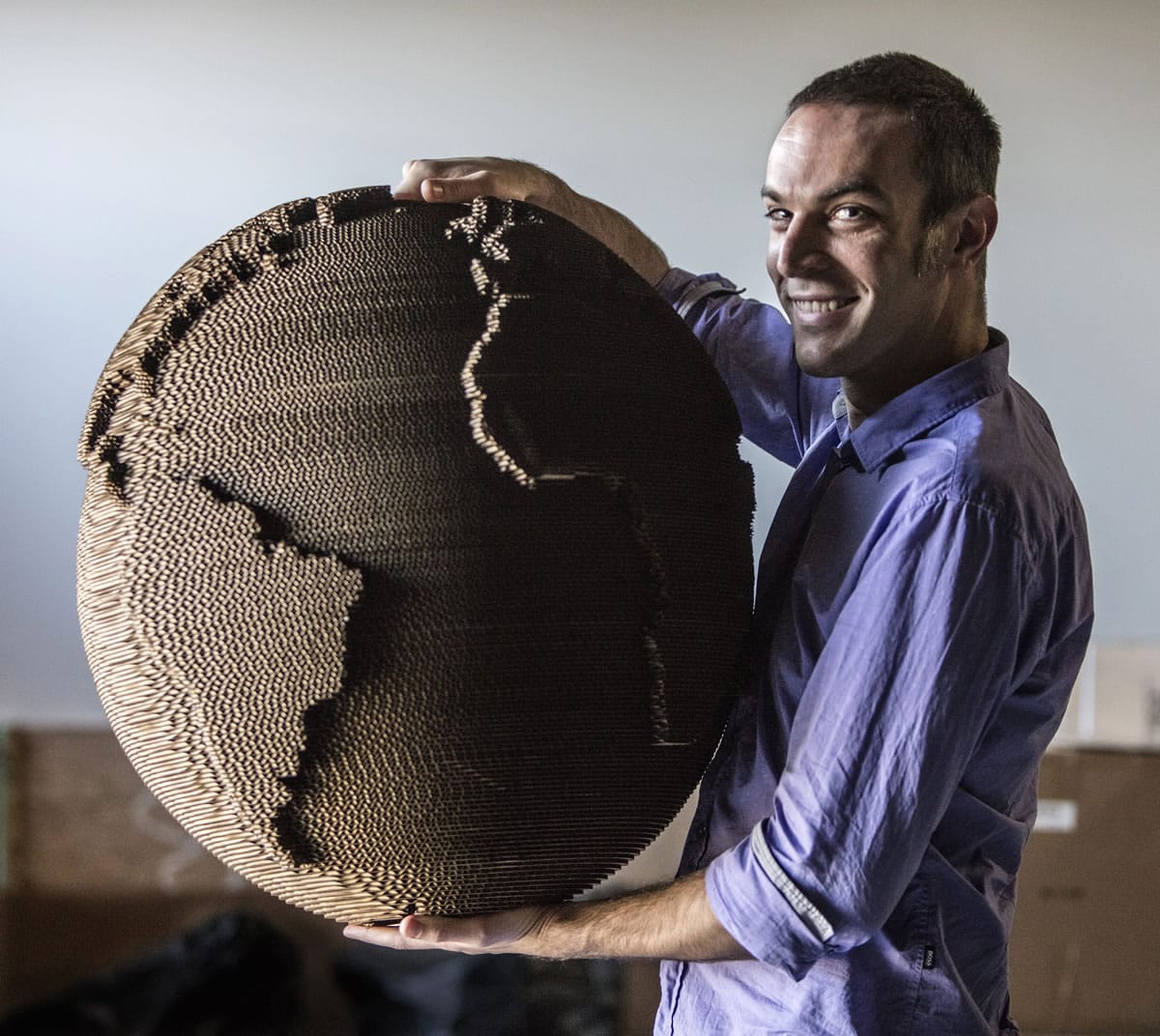SEATTLE — Entrepreneur Dan Shapiro has a long history in the high-tech industry. He founded Sparkbuy, a price-comparison site, was CEO of Google Comparison and launched photo-sharing service PhotoBucket.
But his most rewarding work, he says, has involved creating tangible things that people can touch and feel.
“It was building my dining-room table,” Shapiro said. “It was creating a bookcase for my mom.”
His new company is most definitely tangible — but with a twist.
Shapiro’s enterprise, Glowforge, enables other people — designers, small-business owners, hobbyists, parents — to create things with a 3-D laser printer that can sit on a small desk. The small machine uses a laser to cut through pretty much any type of material and engrave on surfaces — even on laptops.
The 14-person Glowforge team apprehensively made the printer available for pre-orders at Glowforge.com.
If it didn’t raise at least $100,000, it couldn’t even partner with a factory to manufacture the device. If it didn’t raise at least $1 million, it would know something was wrong with its predictions.
Glowforge hit the $1 million mark in the first 12 hours. As of last week, eight days after the campaign launched, it had raised $5.35 million and the number was still climbing.
“It’s kind of blowing my mind,” Shapiro said.
This may not have happened five years ago, when 3-D printing was something individuals rarely could access, and Etsy, an e-commerce site with artisan handmade products, was gaining steam.
The so-called “maker movement,” in which products are made from physical materials, has been in existence for more than a decade, but it’s been booming in the past year.
Etsy went public in April. Maker Faire, a media and events company, hosted more than 240 conventions last year. Collaborative-building spaces for makers are popping up all over the country.
People are once again realizing how important working with physical objects is, said Dale Dougherty, founder of Maker Faire and chairman of Maker Media, an organization that runs Maker Faire, Make: magazine and a social-network site.
“We are coming back to realize it’s important to our kids not to just interact with iPads and phones, but also to engage,” he said. “Making is a high form of engagement.”
That could mean 3-D printed toys, hats that light up or any type of invention that tinkering can bring.
Easier devices
Since 2009, when MakerBot burst onto the scene with a small, easy-to-use device, 3-D printing has caught on. Learning complicated software and programs are no longer required to operate such machines, and prices have become realistic for small businesses. Makerbots start at about $1,375 and range to more than $6,000.
What has helped propel the maker movement are easy distribution channels for small businesses, said Zach Kaplan, a leader in the movement and CEO of Inventables, which makes a 3-D carving machine.
Individuals who want to sell the products they make can now sell them on Etsy, Amazon.com, Shopify or many other sites. There’s no need to take every invention to a retailer to try to find a partner.
“You don’t need to make a million units anymore to sell,” Kaplan said. “You can make one. And if no one wants it, it’s like ‘OK. I just made one.’ ”
The risk of making mistakes has lowered significantly, helped by less expensive devices.
Glowforges can be preordered starting at $1,995 for a basic model, and up to $3,995 for the more advanced machine. That’s a fraction of the price Shapiro paid for an $11,000 laser printer he imported from China. He spent months tinkering with the machine in his garage before forming Glowforge.
Glowforge has raised more than $9 million from investors, in addition to $5 million from preorders.
The next hurdles include determining the total number of preorders, contracting with a manufacturer and partnering with retail stores.
“I didn’t think we would find our audience so quickly,” Shapiro said.



